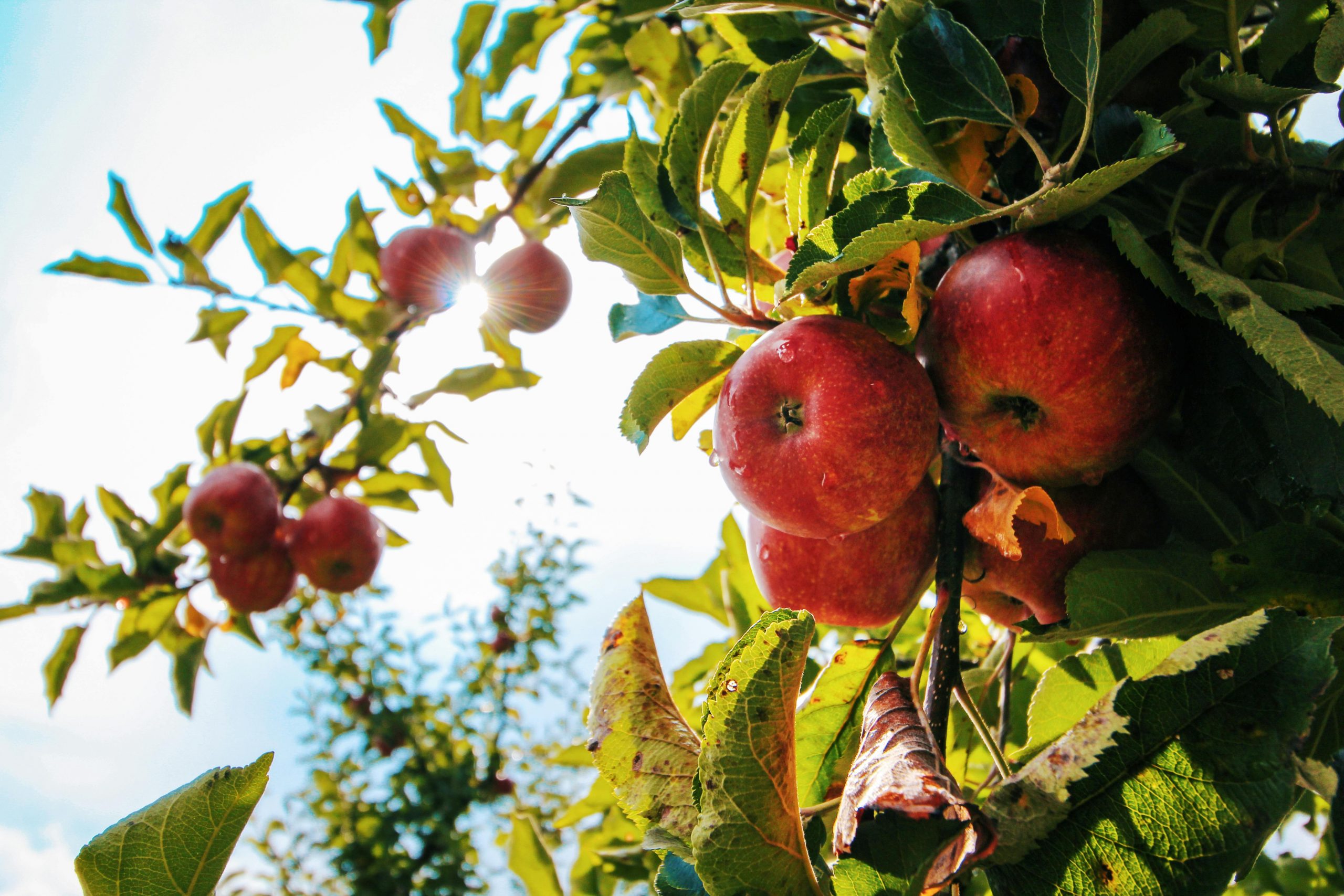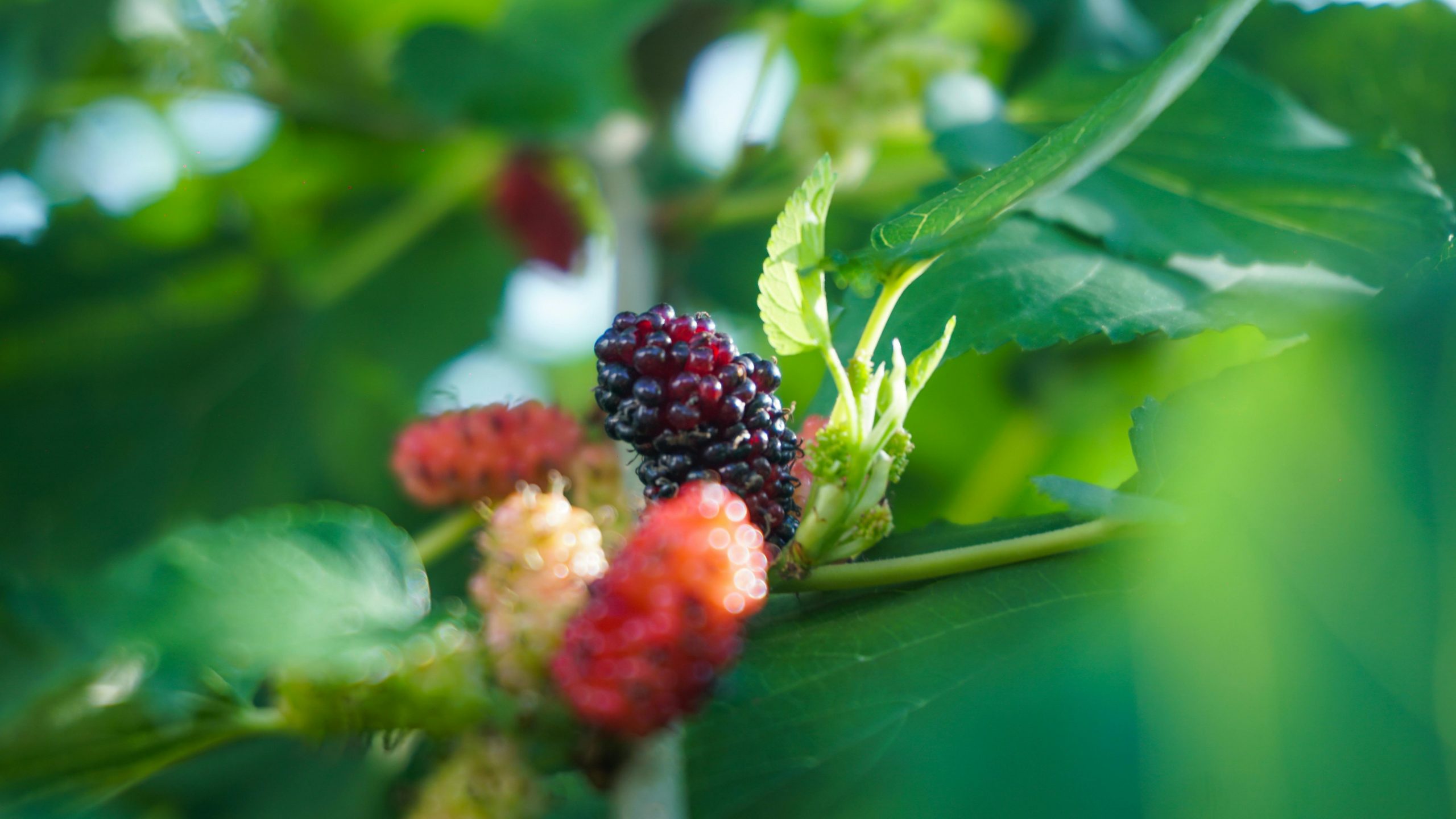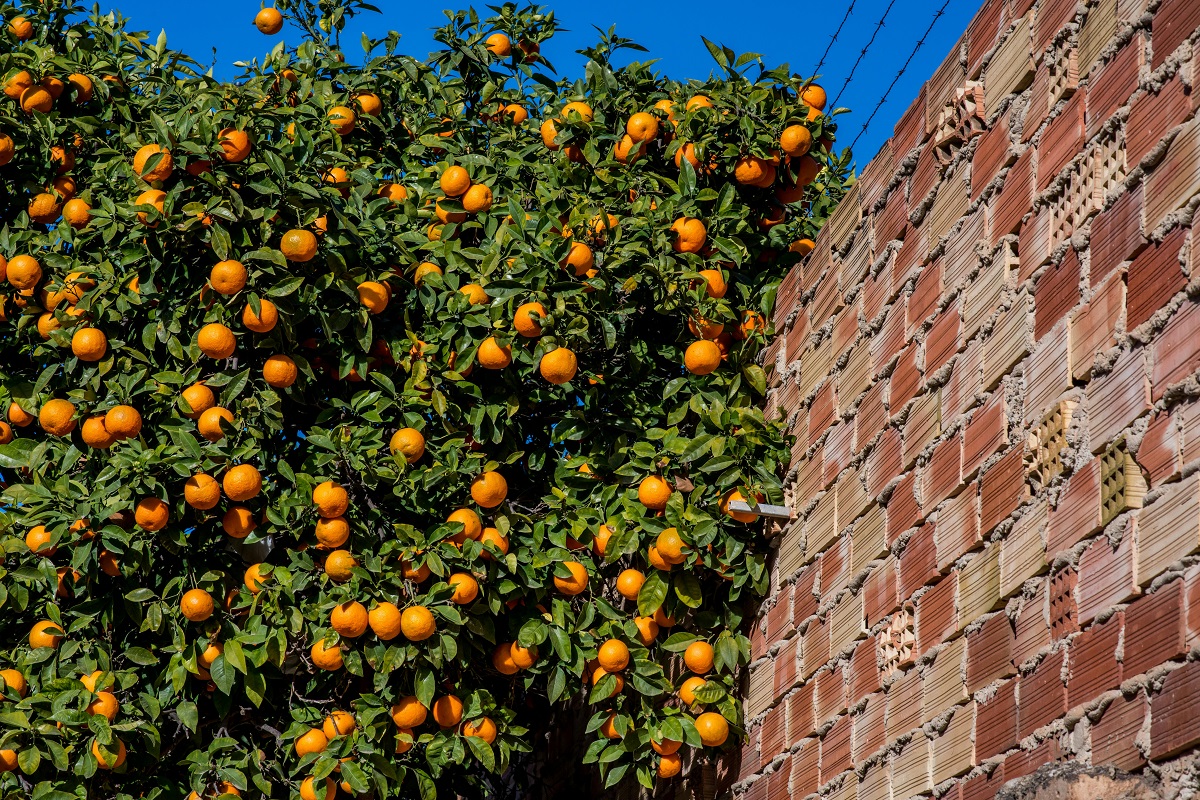- Fast growing fruit trees like apples, peaches, figs, and papayas can produce harvests in as little as 1–4 years, much sooner than most people expect.
- Choosing the right tree depends on climate, available space, and pollination needs, with dwarf and semi-dwarf varieties ideal for small backyards.
- Top picks include classics like apples and peaches, quick producers like mulberries and papayas, and versatile options like figs, pears, and lemons.
- Many fast growers offer extra benefits such as spring blossoms (cherries, pears, apricots), shade (mulberries), and year-round greenery (lemons).
- Proper care—sunlight, watering, pruning, mulching, and fertilizing—helps trees establish quickly and produce abundant harvests.
- Some varieties are self-pollinating (like Meyer lemons and Stella cherries), but others require a companion tree for reliable fruiting.
Planting fruit trees in your backyard is a rewarding way to enjoy fresh, organic food while enhancing your outdoor space. But many homeowners hesitate because they think fruit trees take years before producing anything edible. The truth is, some fast growing fruit trees can give you delicious harvests much sooner than you’d expect.
This guide will walk you through ten of the best fast growing fruit trees, tips for planting and care, and how to choose the right ones for your backyard. Whether you’re a first-time gardener or a seasoned grower, you’ll find practical insights here.
Why Choose Fast Growing Fruit Trees?
Before diving into the list, let’s understand why fast growing fruit trees are so appealing.
- Quick results – Many begin producing within 2–4 years.
- Cost-effective – Fresh fruit saves grocery bills over time.
- Family-friendly – Kids love watching trees grow and eventually harvest fruit.
- Adds value – Fruit trees boost curb appeal and property value.
- Sustainable – Growing your own fruit reduces packaging and transport waste.
So, if you want to enjoy homegrown fruit without waiting a decade, let’s explore the best choices.
1. Apple Trees – A Classic That Grows Faster Than You Think

Apples are one of the most iconic fruits in America, and while many assume they take decades to produce, modern varieties can surprise you with how quickly they grow.
How fast do apple trees grow?
- Dwarf and semi-dwarf apple trees: Often bear fruit within 2–4 years after planting.
- Standard apple trees: Typically take 5–8 years, but healthy soil, pruning, and proper watering can cut this time down.
Why apples make sense for your backyard
- Versatile flavors – From crisp and tart Granny Smiths to sweet Honeycrisps, there’s an apple for every taste.
- Hardy and adaptable – Apples thrive in a wide range of US climates, from northern states with cold winters to milder southern regions.
- Multi-use fruit – Great for eating fresh, baking pies, making cider, or preserving into apple butter.
- Pollinator friendly – Their spring blossoms attract bees and beneficial insects.
Best fast growing apple varieties
- Gala – Sweet, crisp, and excellent for fresh eating.
- Honeycrisp – Juicy, slightly tart, and very popular in the US.
- Fuji – Firm, sweet, and stores well.
Pro tip: Apple trees often require cross-pollination. Plant at least two different varieties with overlapping bloom times to ensure you’ll get a healthy harvest.
2. Peach Trees – Sweet Harvests in Just a Few Years
Peach trees are famous for producing fruit quickly, making them a top pick if you’re eager to enjoy juicy, homegrown peaches without waiting too long.
How fast do peach trees grow?
- Dwarf peach trees: Can produce in as little as 2–3 years.
- Standard peach trees: Usually fruit within 3–4 years, faster than most other stone fruits.
Benefits of planting peach trees
- Thrives in warm climates – Perfect for USDA Zones 5–9, especially in southern states.
- Fresh or preserved – Peaches are delicious for eating straight off the tree, canning, or baking.
- Ornamental value – Their pink spring blossoms are as beautiful as they are productive.
Recommended fast growing varieties
- Elberta – A classic yellow peach with a rich flavor.
- Redhaven – Early ripening and widely adapted.
- Contender – Cold hardy, great for northern states.
Note: Peach trees are prone to diseases like peach leaf curl. Annual pruning and preventive care help maintain their vigor and speed up fruiting.
3. Fig Trees – Low Maintenance and Quick to Bear Fruit
Figs are one of the easiest and fastest fruit trees to grow, especially if you live in a warm, sunny area.
How fast do fig trees grow?
- Most fig trees begin bearing fruit in 2–3 years.
- Some can yield a small harvest in their second year.
Why figs are great for your backyard
- Low maintenance – Require little pruning compared to other fruit trees.
- Flexible growing options – Can thrive in the ground or large containers, perfect for patios or small yards.
- Extended harvest – In warmer climates, some figs produce two crops per year (breba crop in early summer and main crop in late summer).
Popular fast growing fig varieties
- Brown Turkey – Reliable and productive.
- Celeste – Known as the “sugar fig,” very sweet.
- Black Mission – Dark, rich flavor and excellent for drying.
Figs are delicious fresh, dried, or preserved into jam. Plus, they rarely face serious pest problems, making them a backyard favorite.
4. Pear Trees – Reliable and Early Harvesters
Pear trees bring elegance to any backyard with their blossoms and reward you with sweet, juicy fruit.
How fast do pear trees grow?
- Dwarf and semi-dwarf varieties: Produce within 3–5 years.
- Standard pears: Often fruit in 5–7 years, still faster than apples.
Benefits of planting pear trees
- Hardiness – More disease-resistant than apples, particularly varieties like Kieffer.
- Flavor variety – From buttery smooth Bartletts to crisp Anjous.
- Spring beauty – Clusters of white blossoms add ornamental value.
Fast growing pear varieties
- Bartlett – The classic pear, excellent for eating fresh.
- Anjou – Juicy and firm, great for baking.
- Kieffer – Hardy, vigorous, and reliable even in hot climates.
Tip: Pears often need cross-pollination, so plant at least two compatible varieties for consistent yields.
5. Cherry Trees – Quick Color and Flavor
Cherry trees provide both visual beauty and sweet or tart fruits in just a few short years.
How fast do cherry trees grow?
- Dwarf cherry trees: Start producing in 2–4 years.
- Tart cherries: Usually bear fruit faster than sweet varieties.
Why cherries belong in your backyard
- Ornamental appeal – Gorgeous spring blossoms rival flowering ornamentals.
- Fruit versatility – Perfect for pies, jams, fresh eating, or even liqueurs.
- Climate adaptability – Tart cherries thrive in colder areas; sweet cherries prefer milder climates.
Popular fast growing cherry varieties
- Bing (sweet) – Large, dark, and juicy.
- Montmorency (tart) – The most popular pie cherry in the US.
- Stella (self-pollinating) – Great choice if you only want one tree.
6. Plum Trees – Compact and Productive
Plums are smaller than other fruit trees, making them an excellent choice for small backyards or urban gardens.
How fast do plum trees grow?
- Most plums produce fruit in 3–6 years.
- Dwarf varieties may bear even sooner.
Why plums are practical
- Space-saving – Many varieties stay compact and manageable.
- Tasty fruit – Sweet, juicy plums are excellent fresh or dried into prunes.
- Pollinator attractors – Their blossoms draw bees and butterflies.
Fast growing plum varieties
- Methley – Early ripening, sweet red fruit.
- Santa Rosa – A backyard favorite with juicy, tart-sweet flavor.
- Stanley – Classic European prune plum.
7. Mulberry Trees – One of the Fastest Growers

If speed is your top priority, mulberries stand out as some of the fastest fruit producers.
How fast do mulberry trees grow?
- Fruit in just 1–2 years, sometimes even the first year.
- Trees can grow up to 2 feet per year in height.
Benefits of mulberries
- Heavy yield – Produce massive crops once established.
- Adaptability – Grow well in a variety of soils.
- Shade provider – Their large canopy doubles as a shade tree.
Best fast growing mulberry varieties
- Black Mulberry – Known for rich flavor.
- Red Mulberry – Native to the US and very hardy.
- White Mulberry – Extremely vigorous, though fruit is milder in flavor.
Note: Mulberries can be messy; fallen fruit may stain driveways and patios. Plant them in grassy areas or away from walkways.
8. Apricot Trees – Early Bloomers with Sweet Rewards
Apricot trees are early bloomers that deliver golden-orange fruit sooner than many other stone fruits.
How fast do apricot trees grow?
- Many apricot trees start producing fruit in 3–4 years.
Why apricots make sense
- Beautiful blossoms – Early pink-white flowers brighten your yard in spring.
- Delicious fruit – Sweet, tangy apricots are great fresh, dried, or in jams.
- Early harvest – Apricots ripen earlier than most stone fruits, sometimes by late spring or early summer.
Top apricot varieties
- Moorpark – Large fruit with excellent flavor.
- Tilton – Great for canning and drying.
- Goldcot – Cold hardy, good for northern climates.
Tip: Apricots prefer dry springs; too much rain during bloom can damage flowers.
9. Lemon Trees – A Citrus Favorite
Lemon trees are among the most popular citrus fruits for backyard growers, especially in warm regions.
How fast do lemon trees grow?
- Dwarf lemons: Produce within 2–3 years.
- Standard lemons: Usually fruit in 3–5 years.
Benefits of lemon trees
- Year-round greenery – Glossy leaves and fragrant blossoms look beautiful all year.
- Kitchen staple – Use lemons for drinks, cooking, and even natural cleaning.
- Container friendly – Dwarf lemons can be grown in pots and brought indoors in cold climates.
Popular fast growing lemon varieties
- Meyer Lemon – Sweet, thin-skinned, and great for indoor containers.
- Eureka Lemon – Classic grocery store lemon, very productive.
- Lisbon Lemon – Tart and hardy, thrives outdoors in warm regions.
10. Papaya Trees – Tropical and Lightning Fast
Though technically a giant herb, papaya plants behave like trees and are among the fastest fruit producers you can grow.
How fast do papayas grow?
- 1–2 years from seed to fruit.
- In ideal tropical conditions, some varieties fruit in under 12 months.
Why papayas are a backyard favorite in warm climates
- Super-fast harvests – Few plants produce fruit this quickly.
- Tropical taste – Sweet, exotic flavor packed with vitamins A and C.
- Continuous production – Papayas can produce fruit year-round in warm regions.
Best papaya varieties
- Maradol – Large, red-fleshed fruit.
- Hawaiian Sunrise – Sweet and aromatic.
- Red Lady – Early producing and very productive.
How to Choose the Right Fast Growing Fruit Trees
Not every tree works for every backyard. Here’s how to narrow your options:
- Climate: Make sure the variety matches your USDA growing zone.
- Space: Dwarf and semi-dwarf trees are better for smaller yards.
- Maintenance: Some trees need regular pruning and pest control.
- Pollination needs: Certain fruit trees need a partner tree for cross-pollination.
Planting and Caring for Fast Growing Fruit Trees
Planting tips:
- Choose a sunny location with at least 6–8 hours of direct sunlight.
- Ensure soil is well-drained.
- Dig a hole twice the width of the root ball.
- Water deeply right after planting.
Ongoing care:
- Watering: Deep soak once a week, more often in hot weather.
- Mulching: Helps retain moisture and suppress weeds.
- Pruning: Keeps the tree healthy and encourages fruiting.
- Fertilizing: Use a balanced fertilizer designed for fruit trees.
Common Questions About Fast Growing Fruit Trees
Do fast growing fruit trees still live long?
Yes. While they produce fruit sooner, most live for decades with proper care.
Which fruit tree grows the fastest overall?
Mulberries and papayas are among the quickest, often producing fruit within 1–2 years.
Can I grow fast growing fruit trees in containers?
Yes. Dwarf varieties of apples, peaches, figs, and lemons do very well in containers.
Do I need two trees for fruit?
Some trees are self-pollinating (like Stella cherries or Meyer lemons), but many need a companion for pollination. Always check the variety.
Final Thoughts
Planting fast growing fruit trees is one of the best ways to turn your backyard into a productive and beautiful space. From apples and peaches to papayas and lemons, there’s an option for every climate, yard size, and taste preference.
By choosing the right varieties and giving them proper care, you’ll be enjoying homegrown fruit much sooner than you think. So, pick your favorites, get them into the ground, and look forward to the sweet rewards of a thriving backyard orchard.

